Introduction
Purchasing a company could lead to growth and broader market presence for businesses looking to expand their operations significantly according to this piece of writing.It explores the phases in the process of acquiring a business. Starting from identifying your business requirements and carrying out comprehensive market analysis to assessing potential opportunities and engaging in purchase negotiations.By evaluating each potential acquisition opportunity, with the help of industry experts and prioritizing effective communication strategies; companies can confidently navigate through the intricate landscape of mergers and acquisitions.
The last stages of completing the acquisition and merging the entity into current operations are essential to guarantee smooth transitions and achieve lasting success. By planning and executing strategies companies are able to discover fresh prospects and establish a foundation, for ongoing prosperity.
Understanding Your Business Needs
Before engaging in business purchases and making any choices in that area, it's essential to define your needs concerning a possible buy. Begin by taking into account factors like the industry it belongs to, its size and location as well as its financial track record. Reflect on your goals and how a new purchase aligns with your overall vision. Michael Black, from Richter stresses the significance of understanding why you are pursuing the acquisition. Are you looking to expand your reach or expertise or perhaps tap into markets and customer segments? This clear understanding will not just direct your exploration. Also assist you in making well informed choices.
Acquiring companies or online assets has a notable impact on the growth of your enterprise. As demonstrated by Doug Bend of Bend Law Group PC when he shared his experience with acquiring a competitors website that brought in a stream of new leads and fuelled business expansion. Equally advantageous was the acquisition of the domain of a notable HVAC firm that also resulted in considerable benefits.
Evaluate the sources of income for the organization and examine the condition and potential for growth of its assets such as physical items and intellectual property as well as its workforce and financial resources. Assess the strength and reliability of alliances formed by the organization and their influence on efficiency. Examine the nature of customer relationships upheld by the organization, along with the strategies employed to engage and retain them as well as the marketing platforms used.
It is important for sellers to have an idea of their price expectations before entering the lengthy M&A process according to Nanxi Liu from Blaze. Techs advice. Furthermore taking into account the valuation gap is crucial as it has posed a challenge, in recent M&A transactions as noted in a recent survey where over two thirds of both buyers and sellers identified it as a key factor.
Ultimately, having a strategy for acquiring companies can direct you through the challenges of mergers and acquisitions and establish your enterprise for enduring success. By knowing your objectives and carefully assessing purchases you can choose wisely in line, with your aspirations and foster expansion.
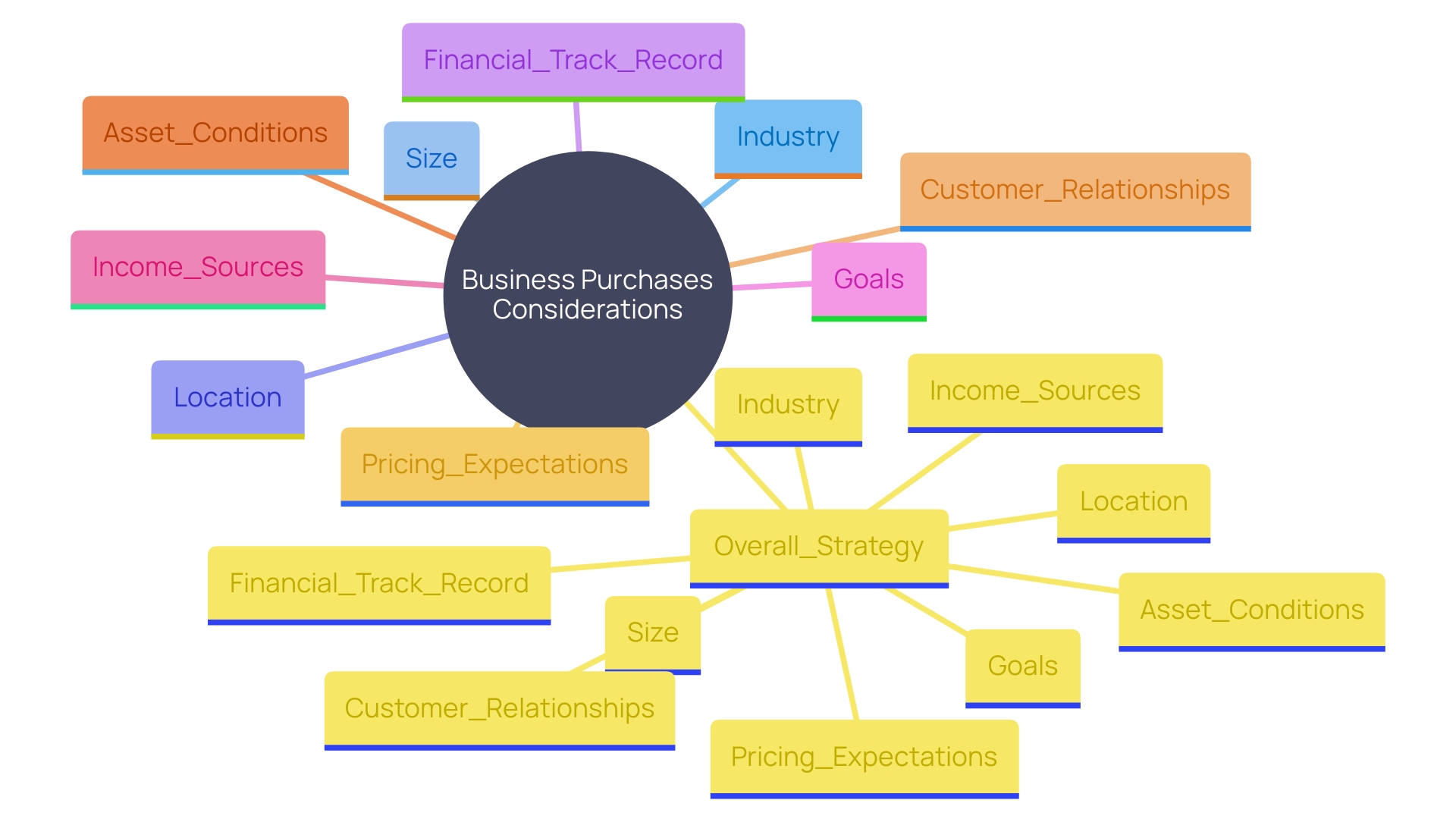
Conducting Market Research
Participating in industry evaluation is an essential component of targeted enterprises that align closely with your goals. Start by examining industry patterns and the competitive landscape along with customer behaviors to understand the trends in the sector. Utilize online resources such as industry studies and local enterprise directories to gather comprehensive information. Connecting with professionals and experts in the field through networking can offer perspectives on potential prospects. This approach not only assists in understanding consumer preferences and behaviors but also aligns your offerings with industry demands, effectively reducing uncertainties in operations.
To evaluate marketing factors effectively utilize primary and secondary research methods. Analyze demographics such as gender, age range, ethnicity, income levels, education attainment and marital status. Additionally consider firmographics like company scale and industry type. Such detailed insights aid in crafting customer personas and pinpoint your desired target audience. Moreover psychographic elements like behaviors, preferences and hobbies are pivotal, in molding your approach.
'Incorporating feedback from customers is essential for enhancing your products and ensuring a customer experience over time while discussing research discoveries with your team encourages shared understanding and innovation efforts within the organization, integrating these findings into your operational approach can yield concrete benefits and give you a lasting edge in the market.'.
The NFIB Economic Trends report from the National Federation of Independent Enterprises is a way to stay informed about trends in small enterprises and the level of optimism among owners these days! It's a resource that provides insight into what your peers are considering and intending to invest in – extremely useful when you need to make strategic choices for your enterprise! Also worth considering is how utilizing AI advancements can enhance the efficiency and reach of your research efforts so that you can make wiser and more significant choices.
Examining the market entails merging consumer behaviors with trends to validate and enhance your concepts effectively from the beginning. It allows you to reduce uncertainties and make well-informed choices that lead to growth and success.
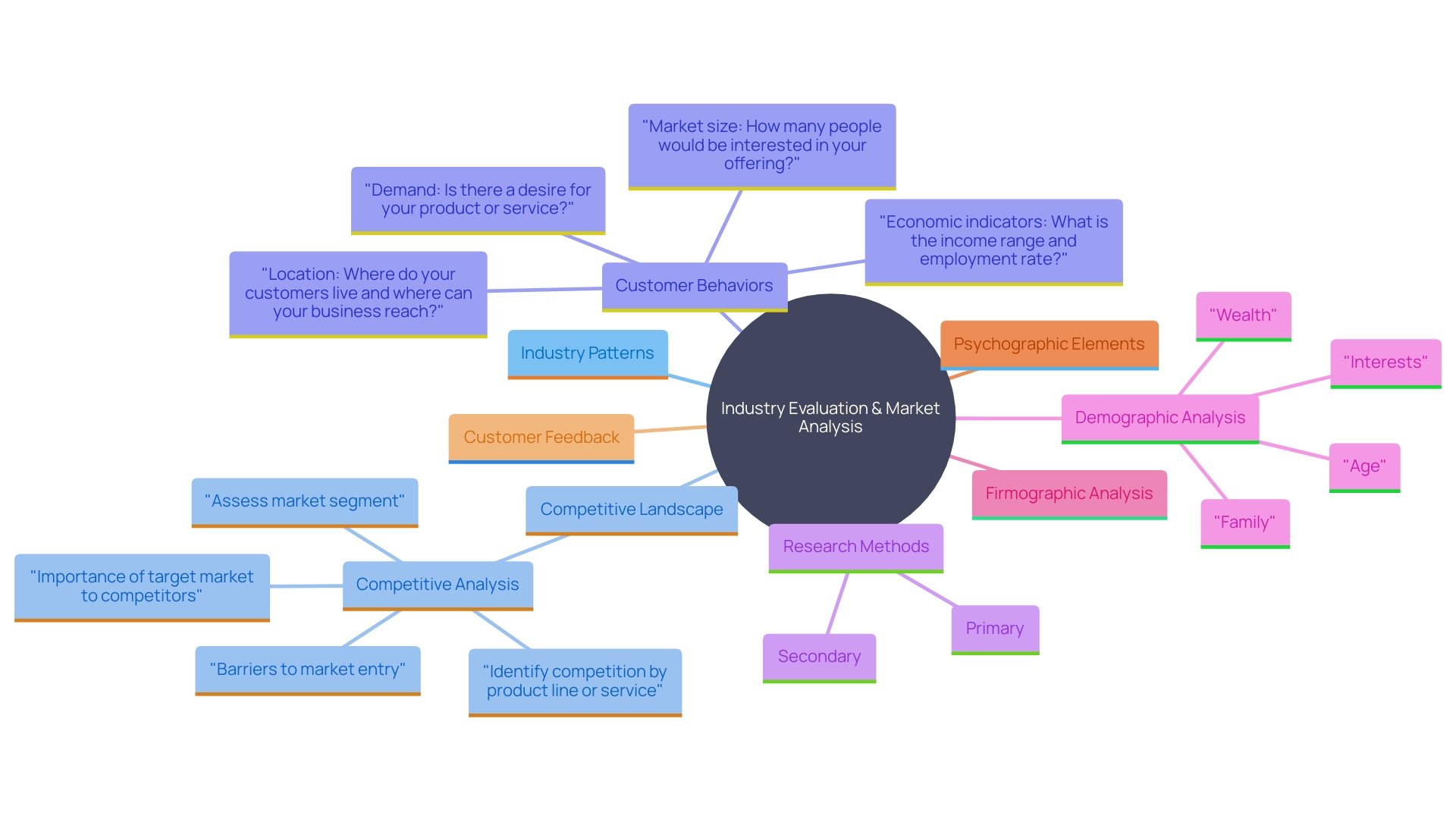
Evaluating Business Opportunities
When you have a lineup of enterprises on your radar it's vital to carefully assess each one. Begin by examining the statements thoroughly making sure you grasp the Income Statement, Balance Sheet and Statement of Cash Flows. Having conversations, with accountants and finance experts can offer valuable perspectives at this point. Take a dive into the customer base and operational methods of each organization. Evaluate the market position and growth possibilities ensuring that the business boasts revenue streams that come in regularly. Performing a Quality of Earnings (or QOE for short) evaluation can be quite advantageous in this scenario since it offers an assessment of the organization's financial health and the reliability of its earnings.
Take into account the kinds of relationships that the company nurtures with its customers and the tactics it uses to draw them in and keep them coming back for more. Understanding the advertising and marketing platforms being used can illuminate how accessing the company is in the market and how it interacts with its audience. Furthermore, examining the connections with partners and suppliers is crucial; assessing their dependability and the quality of these associations is key since having too much reliance on one supplier can lead to significant risks.
It's crucial to hire experts for research to uncover any underlying problems in a process or situation. This involves looking into the breakdown. Both fixed and variable costs. And making sure there's no heavy dependence on particular suppliers or customers. As seen in the journey of Birdies success through strategic collaborations and creative product offerings resulting in substantial expansion a comprehensive assessment will assist you in finding the most suitable option, for your requirements. Running a business might demand an investment and patience upfront before turning a profit; hence it's crucial to ensure you maintain sufficient cash flow to support your enterprise in its initial phases.
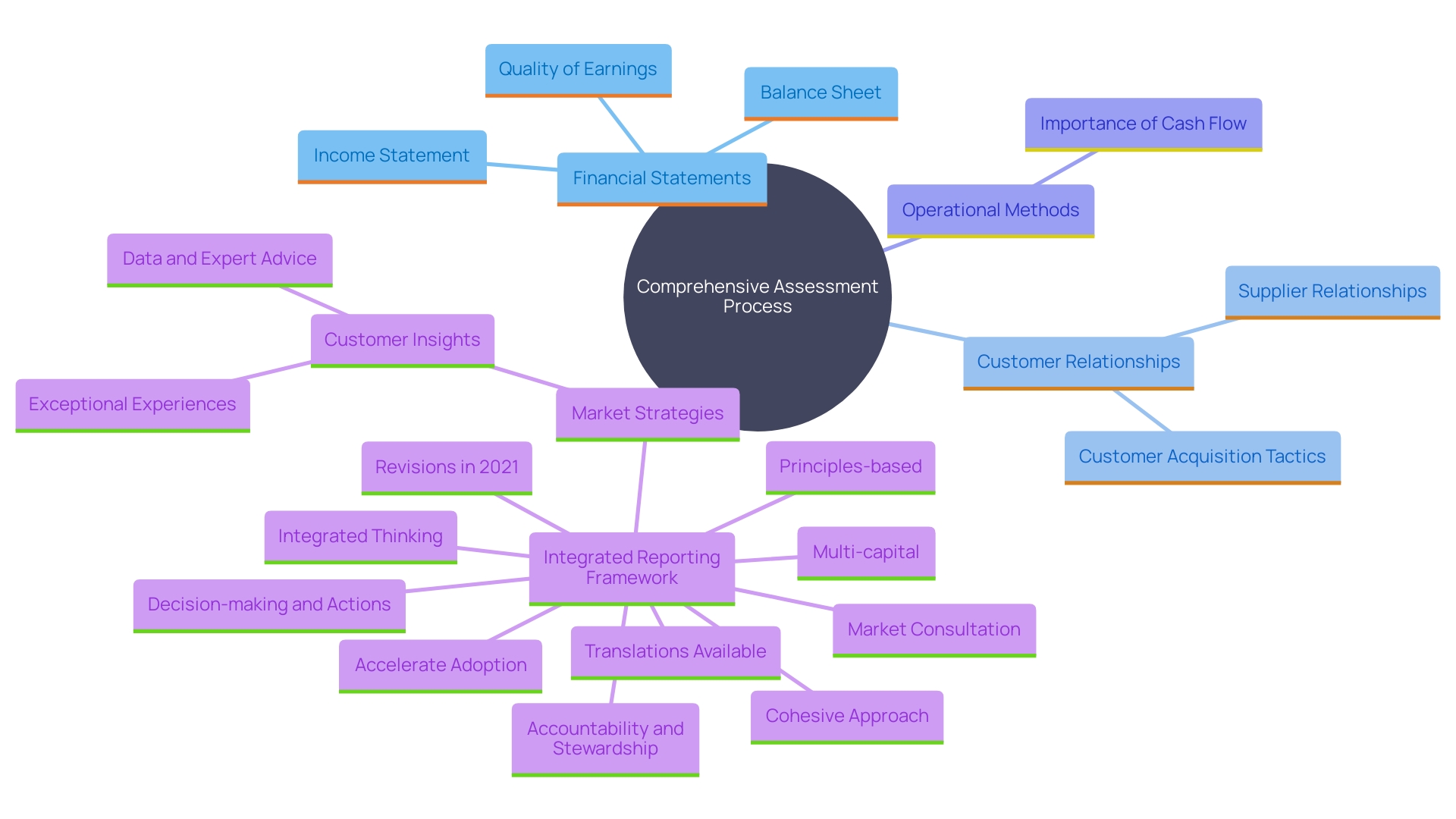
Negotiating the Purchase
Negotiating plays a role in the process of acquiring something and being adequately prepared for it can greatly influence the end result. Start by having an understanding of your goals and the strategic purposes behind the acquisition process. As emphasized by Michael Black from Richter Partnerships firm; it's important to determine whether your objective is to expand operations or expertise or connect with clients and consumers. Having this clarity will steer your conversations. Keep you on track, towards achieving what you aim for.
In any negotiation scenario flexibility is crucial because things seldom go according to plan; adept negotiators are able to adapt to information and modify their tactics accordingly as needed. As stated by Chris Voss in his book 'Never Split the Difference' being prepared plays a role, in successful negotiations but often goes unnoticed and unappreciated. It is essential to equip yourself with an understanding of the industry landscape market trends and the sellers underlying motives. This level of preparation empowers you to confidently address any issues that may arise and steer the discussion towards an outcome.
Building a connection and fostering effective communication are crucial elements as well in negotiations with the seller to ensure a smooth process of reaching a mutually beneficial agreement that nurtures a positive and enduring relationship, between both parties involved in the transaction.
In challenging negotiations it is crucial to stand firm and show confidence as recommended by industry professionals. It's essential to assert yourself and not back down from conflicts but important to show respect and empathy towards the seller's point of view. This strategy can assist in reaching a mutually beneficial agreement that supports your objectives while also nurturing a positive rapport with the seller.
In the competitive business landscape today is crucial for businesses to excel in negotiations as it could significantly impact their success trajectory; closing deals that are mutually beneficial establishes a company's commitment, to valuing its partners and clients which may lead to enhanced business expansion and the exploration of fresh prospects moving forward.
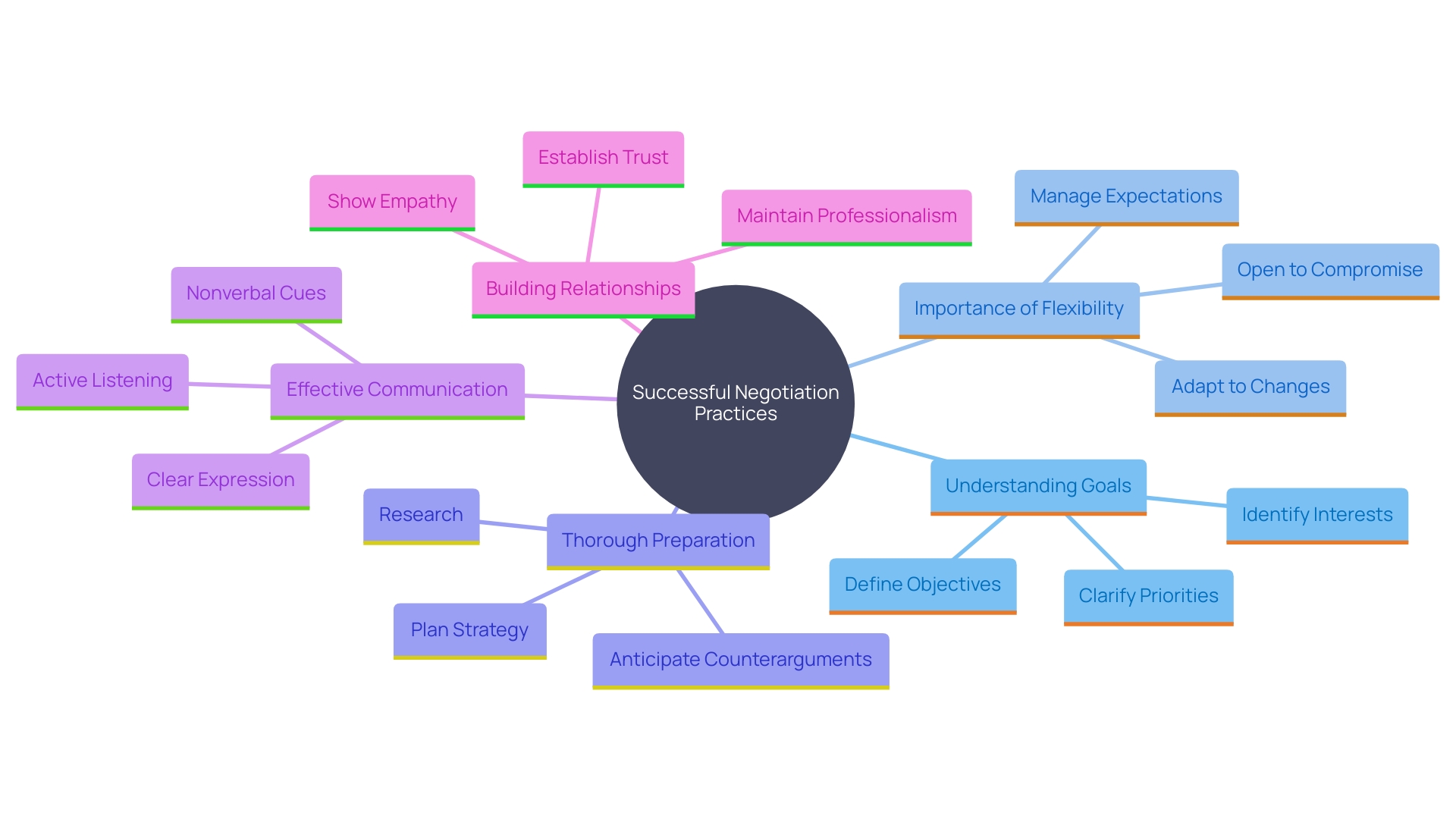
Finalizing the Acquisition
Finalizing a purchase is a phase that demands careful attention to specifics and collaboration with experienced legal and financial professionals. Start by making sure all paperwork is meticulously prepared and checked to avoid any mistakes. This thorough process not protects your interests but also sets up a seamless shift, in ownership.
During this stage of the process is when collaborating with professionals may uncover chances and potential dangers that could arise. For example is how Bardell Venture Management effectively utilized data from Sage Intacct to greatly enhance their profits which showcases the importance of seeking expert advice. Similarly, the situation where acquiring a competitor's platform led to considerable growth for a technology company by drawing in new clients and extending its influence in the industry.
The increase in purchases noted by Brad Schwartzberg illustrates the rising involvement among smaller firms and private equity investors as market conditions shift swiftly, highlighting the current significance of being prepared and adaptable. Recent research shows that over 95 percent of industry leaders acknowledge how the climbing interest rates influence their merger and consolidation strategies, underscoring the necessity to make prudent choices and strategize effectively, now more than ever.
By meeting all the sale requirements and seeking guidance from professionals, you can confidently navigate the intricacies of the purchasing process and set your business up for success in the long run.

Post-Purchase Operations and Integration
Upon taking ownership of an organization, the phase of integration plays a role in securing its prosperity and optimizing its worthiness. Initiate by harmonizing operations with your existing protocols or bringing your vision into practice. Maintaining lines of communication with staff and stakeholders is crucial, for ensuring a seamless shift. Regularly monitoring performance indicators and making adjustments will assist in aligning the recent purchase with your corporate objectives.
One example involves a salesperson working for a company who encountered increased pressure impacting interactions with others as well as meeting deadlines and achieving sales targets. This scenario resulted in miscommunications among team members and clients well as an increase in staff leaving their positions. By tackling these challenges through training focused on skills and emotional intelligence the organization enhanced employee connections and productivity demonstrating the significance of having skilled personnel, in achieving seamless operations.
'Jason Turner emphasizes the importance of understanding the reasons behind mergers and takeovers such as broadening influence or entering new markets as crucial strategies at Venbrook Group. He highlights the significance of resources by stating that integrating purchased entities into your organizational plan requires a thorough assessment of internal capabilities, talent strategies, and purchasing methods.'.
Douglas Bryant of Sonic Automotive also mentions the advantages of training initiatives in promoting mobility and staff retention while notably decreasing turnover rates—a testament, to the importance of supporting employees during their onboarding journey.
Moreover, data indicates that having a view of inventory throughout all network locations is now a basic necessity for retail operations, as it enables them to provide a seamless shopping experience across different channels for customer benefit. This strategy exemplifies the effective use of key resources such as technology and data to achieve positive outcomes during the integration process.
Ultimately emphasizing the importance of aligning strategies, clear communication and utilizing both resources and technological assets can greatly enhance the outcome of your business acquisition and position it for sustainable growth, in the long run.
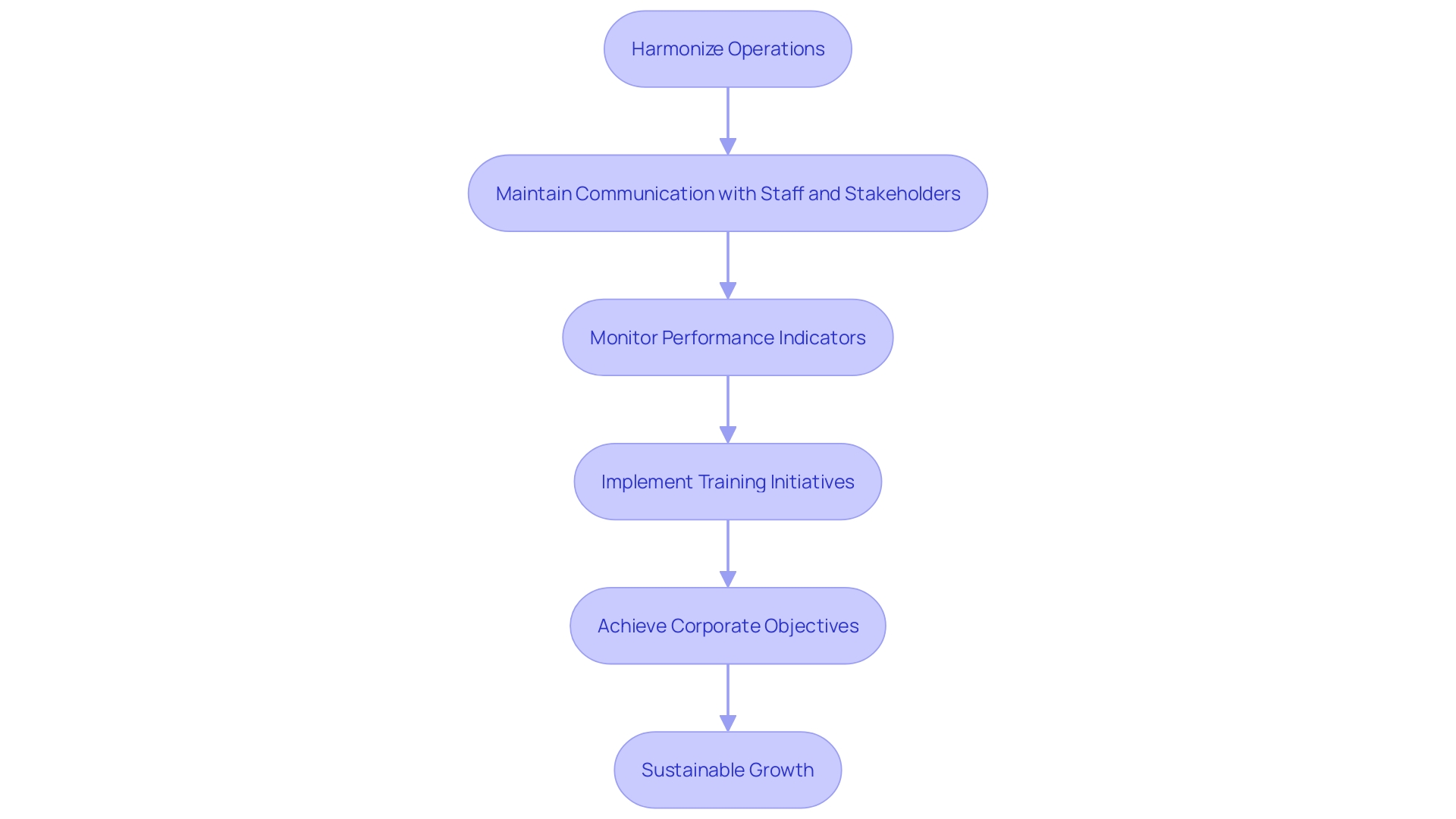
Conclusion
The process of acquiring a business is complex. Involves important stages that can greatly impact the success of the venture. Understanding the needs of a business is essential as it sets the foundation, for making strategic choices and ensuring they align with overarching objectives. Thorough market research plays a role in this journey by offering valuable insights that help businesses pinpoint opportunities that match their aspirations.
Assessing purchases involves a detailed review of financial stability and operational strengths to make well informed choices.A successful negotiation relies on goals and flexibility to build partnerships that can result in mutually advantageous deals.As the acquisition procedure wraps up paying attention to specifics and working with professionals guarantees a smooth transfer of ownership safeguarding interests and setting the stage for future expansion.
Following the acquisition process comes the crucial step of integration which involves aligning operations and ensuring communication is upheld as top priorities.After cultivating a work environment that prioritizes employee involvement and utilizing tools effectively businesses have the opportunity to maximize the potential of their newly acquired assets.This holistic strategy not improves operational effectiveness but also sets up the company for long term prosperity by exploring fresh opportunities, for development and success in a constantly changing business landscape.
By adopting these tactics can help companies effectively handle the challenges of mergers and acquisitions and achieve long term success in the end.




